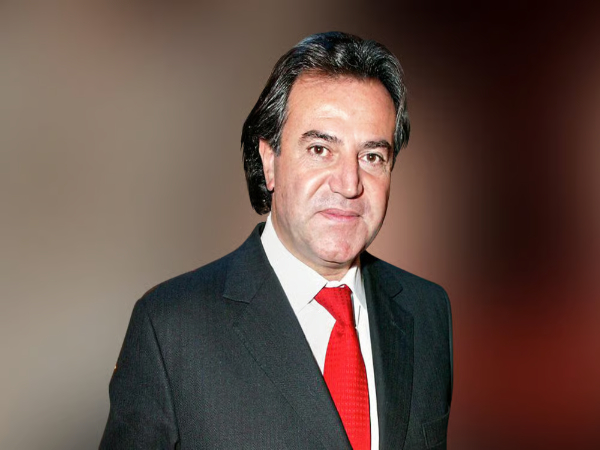Simon Halabi: From Billionaire Property Tycoon to Legal Battles and Financial Ruin
The Rise and Fall of a Syrian-Born Mogul Who Shaped London’s Skyline

Simon Halabi is a Syrian-born British businessman who rose to billionaire status as one of the most powerful property investors in the UK, once controlling some of London’s most iconic landmarks. Ranked among the world’s richest men, Halabi’s empire spanned luxury estates, office towers, and high-profile developments such as The Shard project. However, his journey was marked by dramatic financial collapse during the 2008 crisis, bankruptcy, controversial legal disputes, and personal scandals that reshaped his public image and fortune.
Early Life and Background
Simon Halabi, born in August 1958 in Syria, grew up in a wealthy family with deep business roots. His father was a successful businessman, giving Simon early exposure to commerce and finance. Later in life, he moved to the United Kingdom and obtained British nationality, where his name soon became synonymous with bold investments in the luxury property market.
Halabi’s upbringing provided both opportunity and ambition. Unlike many self-made billionaires, his entry into the world of wealth was aided by family support. Yet it was his aggressive and risk-driven investment style that set him apart, propelling him into London’s high society and eventually earning him a place on the global rich lists.
Simon Halabi Age
As of 2025, Simon Halabi is 67 years old. Despite the passing years, his story remains a remarkable case study in wealth creation, downfall, and resilience within the property sector. His age reflects not just time but decades of influence, controversies, and lessons that continue to resonate in financial and real estate circles.
Simon Halabi Family
Family has played both a supportive and tragic role in Simon Halabi’s life. He married Urte Halabi, and the couple had two sons, Samuel and Jacob. Heartbreak struck in 2003 when Samuel tragically drowned in the family swimming pool, a devastating loss that deeply impacted Halabi’s personal life.
The Halabi family lived in extraordinary wealth, often in lavish estates that symbolized Simon’s success. Despite financial collapses and public controversies, his family name continues to be tied to some of the most ambitious property ventures in British history.
The Rise of a Billionaire
By the early 2000s, Simon Halabi had established himself as one of the most powerful landlords in London. His portfolio included major commercial buildings such as:
-
Aviva Tower
-
JP Morgan’s offices at Victoria Embankment
-
RSA’s Leadenhall Court
-
Millennium Bridge House
-
A stake in The Shard, which was then a groundbreaking skyscraper project
These assets were part of what became known as the White Tower portfolio, one of the largest property securitisations in Europe.
In 2007, at the height of his success, Halabi was listed at 14th place on the Sunday Times Rich List, while Forbes estimated his net worth at $4.3 billion. At this point, he was not just a wealthy man—he was a symbol of London’s global property dominance.
Investments in Luxury Estates
Beyond commercial property, Simon Halabi invested in luxury estates that showcased his taste for grandeur. Two of his most famous acquisitions were:
Mentmore Towers (Buckinghamshire): Purchased in 1997, it was meant to be converted into a luxury hotel and golf resort. However, the project stalled, and the property later fell into neglect.
Cambridge House (The In & Out Club) in Piccadilly, London: Once a historic gentleman’s club, Halabi envisioned it as a luxury hotel. Unfortunately, this project too faced long delays and financial setbacks.
These ambitious but unfinished ventures highlighted both his daring vision and the risks of overreaching.
Simon Halabi Net Worth
Simon Halabi’s net worth has been one of the most dramatic financial stories in modern property history.
Peak Wealth (2007): Estimated at around $4.3 billion.
After the Crash (2008–2010): His empire collapsed when property values plunged and loans defaulted. By April 2010, he was declared bankrupt, with debts exceeding tens of millions.
Current Status (2025): His exact net worth is unclear, but far from his peak billionaire status. Some sources suggest that while he retains partial ownership of properties and family trusts, his personal fortune has been severely diminished.
This extreme swing in wealth reflects the volatility of leveraged property investments and the dangers of rapid expansion without long-term stability.
The Fall: Financial Crisis and Bankruptcy
The 2008 global financial crisis hit Simon Halabi’s empire hard. In 2006, he had borrowed over £1.4 billion against nine London properties. When valuations plummeted during the crash, the loans went into default.
By 2010, his assets were being seized and sold. The Carlyle Group acquired six of his central London buildings from administration for around £671 million, far below their original valuations. Halabi’s bankruptcy was officially declared in April 2010, ending his reign as one of the UK’s wealthiest property moguls.
Legal Disputes and Controversies
Simon Halabi’s life has not been free from controversy. His legal issues have been widely publicized:
1998 Conviction in France: Under the name Mohammed Halabi, he was convicted of violent rape and given a three-year suspended sentence. The use of an alias meant this conviction was not immediately recognized in the UK.
UK Notification Orders: Later, UK courts ruled he must comply with sex offender notification requirements. Halabi contested these orders, arguing they violated his privacy.
Racial Abuse Allegations (2015): He was accused of verbally abusing a binman outside Annabel’s, a famous London club, calling him derogatory names.
Trust and Tax Disputes: In recent years, Halabi has been involved in complex legal battles over Jersey trusts and disputes with HMRC concerning his tax affairs.
These controversies damaged his reputation and further distanced him from the image of a polished billionaire landlord.
Simon Halabi Wikipedia Presence
Simon Halabi’s life story is detailed in multiple sources, including a dedicated Wikipedia page. His profile highlights:
His birth and nationality (Syrian-born, later British).
His property empire and involvement in iconic London buildings.
His rise to billionaire status, followed by financial ruin.
His criminal conviction in France and subsequent legal battles.
His bankruptcy and struggles with property losses.
This Wikipedia entry has become a reference point for those researching his career and controversies, but the details also reveal how complex and scandal-filled his journey has been.
Legacy and Lessons Learned
Simon Halabi’s story offers important lessons for entrepreneurs and investors:
Leverage Can Destroy Wealth: His heavy reliance on loans magnified the effects of the 2008 crash.
Reputation Matters: Legal controversies and scandals tarnished his standing in business and society.
Ambition vs. Execution: His ambitious projects, such as Mentmore Towers and Cambridge House, showed vision but failed due to execution and timing issues.
The Fragility of Fortune: From $4.3 billion to bankruptcy in less than three years illustrates how fragile wealth can be when tied to volatile markets.
Conclusion
Simon Halabi’s life is a remarkable tale of wealth, ambition, and downfall. Once celebrated as one of the most influential landlords in London, his empire crumbled under the weight of the financial crisis and personal controversies. Today, his name is remembered as both a symbol of London’s booming property era and a cautionary story of over-leveraged ambition.
Despite his reduced fortune, Simon Halabi remains a figure of intrigue. His biography continues to capture attention, ensuring that his story will be studied for years to come as one of the most dramatic rises and falls in modern business history.



